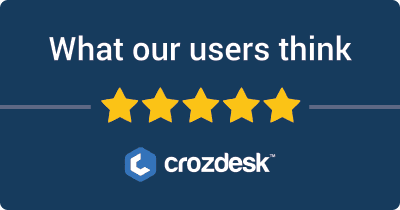Content Creation Tools Comparison as of July 2025
Find the top brands & their alternatives in the Content Creation Tools category. Find comparison data such as reviews, marketing data, and their best features.
Content Creation Tools Alternatives
Top AI Analysis Content Creation Tools pages
Understanding Content Creation Tools: What They Are and Why They Matter
Content creation tools are software solutions designed to simplify the process of producing high-quality content for various platforms. These tools enable users to create engaging visuals, videos, articles, and other digital assets efficiently. By automating repetitive tasks and offering pre-designed templates, they cater to both beginners and professionals seeking to elevate their content.
From social media content creation tools to AI tools for content creation, these platforms help streamline workflows and ensure consistency across channels. Whether you’re a small business owner or a digital marketing professional, leveraging content creation tools can significantly enhance your content strategy and save time.
Types of Content Creation Tools: Choosing the Right Solution for Your Needs
Content creation tools come in different forms, each designed to address specific content needs. Below are the main categories:
- Content Creation Tools for Social Media
- Tailored for creating visually appealing posts, videos, and stories.
- Examples: Canva, Adobe Spark.
- Digital Content Creation Tools
- Designed for a broader range of digital assets like infographics, presentations, and animations.
- Examples: Visme, Prezi.
- AI Tools for Content Creation
- Leverage artificial intelligence to generate text, design visuals, or edit videos.
- Examples: Jasper, Runway ML.
- Video Content Creation Tools
- Specialised for creating and editing videos for platforms like YouTube or TikTok.
- Examples: Final Cut Pro, CapCut.
- Writing and Editing Tools
- Focused on generating and refining written content such as blog posts and captions.
- Examples: Grammarly, Hemingway Editor.
By understanding your goals and the type of content you aim to create, you can select tools that best suit your needs.
Key Features to Look For in Content Creation Tools
When selecting the best content creation tools, focus on features that enhance productivity and creativity. Here’s what to look for:
- Ease of Use
- Choose tools with intuitive interfaces that simplify the creation process.
- Drag-and-drop functionality is ideal for beginners.
- Customisable Templates
- Look for platforms offering pre-designed templates for social media, videos, and other formats.
- Templates save time while ensuring professional results.
- Integration with Other Platforms
- Ensure compatibility with tools like social media schedulers, analytics platforms, or CMS.
- Seamless integration enhances workflow efficiency.
- AI-Driven Features
- Tools with AI capabilities can assist in generating content ideas, automating tasks, or creating visuals and text.
- Examples include auto-captioning for videos or AI-driven design suggestions.
- Collaboration Tools
- For teams, select tools that enable multiple users to collaborate in real time.
- Features like shared libraries and commenting streamline team workflows.
- Scalability
- Pick tools that can grow with your needs, from simple projects to advanced content campaigns.
Top-rated platforms like Canva and Jasper incorporate these features, making them versatile choices for diverse content needs.
Use Cases: Practical Applications of Content Creation Tools
Content creation tools are essential for a variety of scenarios, including:
- Social Media Content
- Use tools like Canva to design visually appealing posts, stories, and videos for platforms like Instagram, Facebook, and LinkedIn.
- Automate content resizing to fit platform-specific dimensions.
- Digital Marketing Campaigns
- Leverage tools like Visme to create infographics, presentations, and email visuals.
- Maintain brand consistency across multiple channels.
- Video Content Creation
- Platforms like CapCut and Final Cut Pro simplify video editing for YouTube, TikTok, and other platforms.
- Add captions, transitions, and effects for professional-quality videos.
- Blog and Article Writing
- Tools like Grammarly and Jasper assist with generating, editing, and refining text content.
- AI-driven tools help streamline the process of creating engaging blog posts.
- Content Calendars and Planning
- Use tools like Trello or Asana to organise and manage your content creation schedule.
- Collaborate with teams to ensure timely execution of content strategies.
These use cases demonstrate how content creation tools can empower businesses to produce high-quality, consistent, and engaging content across different platforms.
Frequently Asked Questions About Content Creation Tools
Q1: What are content creation tools, and why are they important?
Content creation tools are software solutions that help produce high-quality content, such as visuals, videos, and written pieces. They simplify the creation process, save time, and ensure professional results, making them essential for digital marketing and social media strategies.
Q2: What are the best content creation tools for social media?
Popular tools for social media include Canva for designing visuals, CapCut for video editing, and Buffer for scheduling content. These tools are user-friendly and cater to various content needs, from posts to stories.
Q3: Are there free content creation tools available?
Yes, many free content creation tools, such as Canva Free and CapCut, offer robust features. They are perfect for small businesses or individuals looking to create high-quality content without a subscription.
Q4: How do AI tools help with content creation?
AI tools like Jasper and Runway ML assist in generating text, designing visuals, and editing videos. They automate repetitive tasks, provide content suggestions, and improve efficiency in the creative process.
Q5: What features should I look for in a content creation tool?
Focus on ease of use, customisable templates, integration with other platforms, AI-driven features, collaboration tools, and scalability. These features ensure a smooth workflow and help create impactful content.
Q6: What are digital content creation tools, and who should use them?
Digital content creation tools, like Visme and Prezi, are ideal for creating infographics, presentations, and other assets. They cater to businesses, educators, and marketers aiming to produce visually engaging digital content.
Q7: Can content creation tools improve my social media strategy?
Absolutely. Social media content creation tools streamline the design and scheduling of posts, ensuring a consistent and engaging online presence. Tools like Canva and Buffer are particularly effective for this purpose.
Q8: How do content creation tools integrate with other platforms?
Most tools integrate with social media schedulers, analytics platforms, and CMS systems. For instance, Canva allows direct posting to Instagram or LinkedIn, while Grammarly integrates with Google Docs for seamless editing.
Q9: What are the benefits of using video content creation tools?
Video tools like CapCut and Final Cut Pro simplify editing and enhance production quality. They enable you to add effects, transitions, and captions, making videos more engaging and professional.
Q10; What is the role of AI in content creation tools?
AI tools streamline content creation by generating ideas, automating repetitive tasks, and personalising content. They are invaluable for creating text, designs, and even videos with minimal manual effort.


